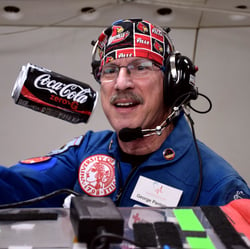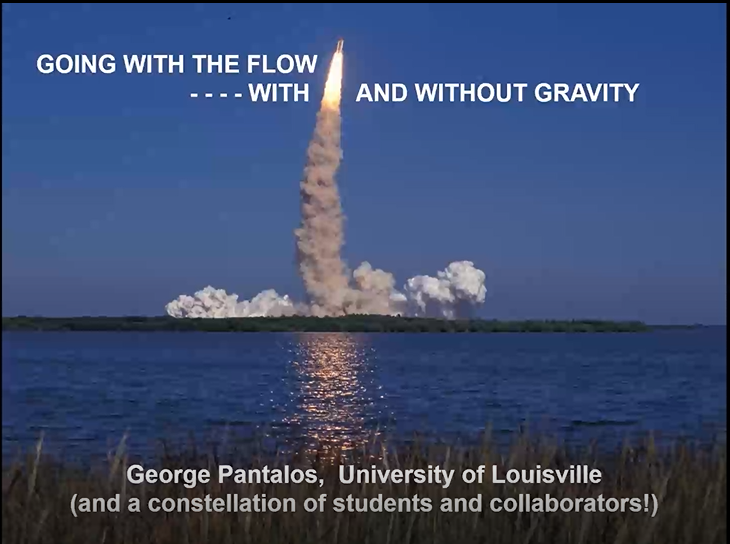Webinar Review: Dr. George Pantalos
 On January 25, 2022, we hosted our 12th live webinar as part of our client-lead webinar series. This series strives to connect researchers throughout the world on topics related to vascular blood flow, blood pressure and ventricular pressure-volume loops. In this webinar, we heard from Dr. George Pantalos, a Professor of Cardiovascular & Thoracic Surgery and a Professor of Bioengineering at the University of Louisville. George has also been collaborating with NASA for many years helping to understand cardiovascular adaptation to the weightlessness of space flight and the return to earth.
On January 25, 2022, we hosted our 12th live webinar as part of our client-lead webinar series. This series strives to connect researchers throughout the world on topics related to vascular blood flow, blood pressure and ventricular pressure-volume loops. In this webinar, we heard from Dr. George Pantalos, a Professor of Cardiovascular & Thoracic Surgery and a Professor of Bioengineering at the University of Louisville. George has also been collaborating with NASA for many years helping to understand cardiovascular adaptation to the weightlessness of space flight and the return to earth.
As a cardiovascular explorer for over 45 years, George has spent his time seemingly between two worlds – terra firma and lower earth orbit. His earth-bound endeavors have included efforts to investigate cardiovascular function and the treatment of heart failure with mechanical devices including artificial hearts, ventricular assist devices, and cardiopulmonary support systems. In these projects, he has helped develop, test, and implement these technologies clinically in patients. In his collaborations with NASA, George as flown 53 research missions on the NASA parabolic flight aircraft and led the development of a cardiovascular diastolic function experiment – that included an instrumented artificial heart beating on a circulation simulator – that flew twice on the Space Shuttle Discovery! Through George’s storied and eclectic career, Transonic equipment has been utilized on several of the projects above. In our webinar, we were lucky to have George review through some of these milestones, help us understand how these two worlds connect and along the way, help us better appreciate what is possible in the future by reviewing the past. Below is a summary of the event:
George breaks down his research into 4 different opportunities for blood flow measurement:
- Human; including Adult Ventricular Assist Device patients, pediatric cardiac surgery patients and adult tissue perfusion
- Animal; including pediatric ventricular assist device, cardiopulmonary support device and ex vivo lung perfusion
- Cardiovascular Physical modeling; including pediatric cardiovascular simulator and cardiac diastolic function in spaceflight
- Technology Evaluation; including IV simulation for spaceflight, red blood cell preservation and surgical fluid management systems for spaceflight
Key advancements from the above projects include:
- Measurement of blood flow from the outflow of left ventricular assist device grafts using our PAU vascular flow probes.
- Implantation of cardiac assist devices in models to simulate pediatric cases using an early model of our PXL clamp on tubing flow sensors.
- Ex vivo lung perfusion system developments to reduce cost, this project includes our ¼” PXL clamp on tubing flow sensors as well.
- Development of a pediatric cardiovascular simulator with miniaturization into “KardioKid” for the training of hospital staff.
- Improvements in the understanding of cardiac diastolic function using zero-G testing on the space shuttle.
- Resuscitation models using IV fluids during parabolic flight, this work including our 4PXN In-line flow sensors.
- Blood transfusion therapy in reduced gravity.
Our Q&A period included several questions from the field related to George’s perception of the current Left Ventricular Assist Device market, the importance of flow measurement, next steps in his lab and importantly, the connections between his earth bound and zero-G studies. To review the full presentation, you can click here to watch on demand at your convenience.
We would like to again thank Dr. George Pantalos for joining us for this interesting talk. If you would like to learn more about George’s work, you can visit his page on the University of Louisville’s website and you can also get a better idea of how the zero-G work progresses, by watching this video.
Talk with you soon!




